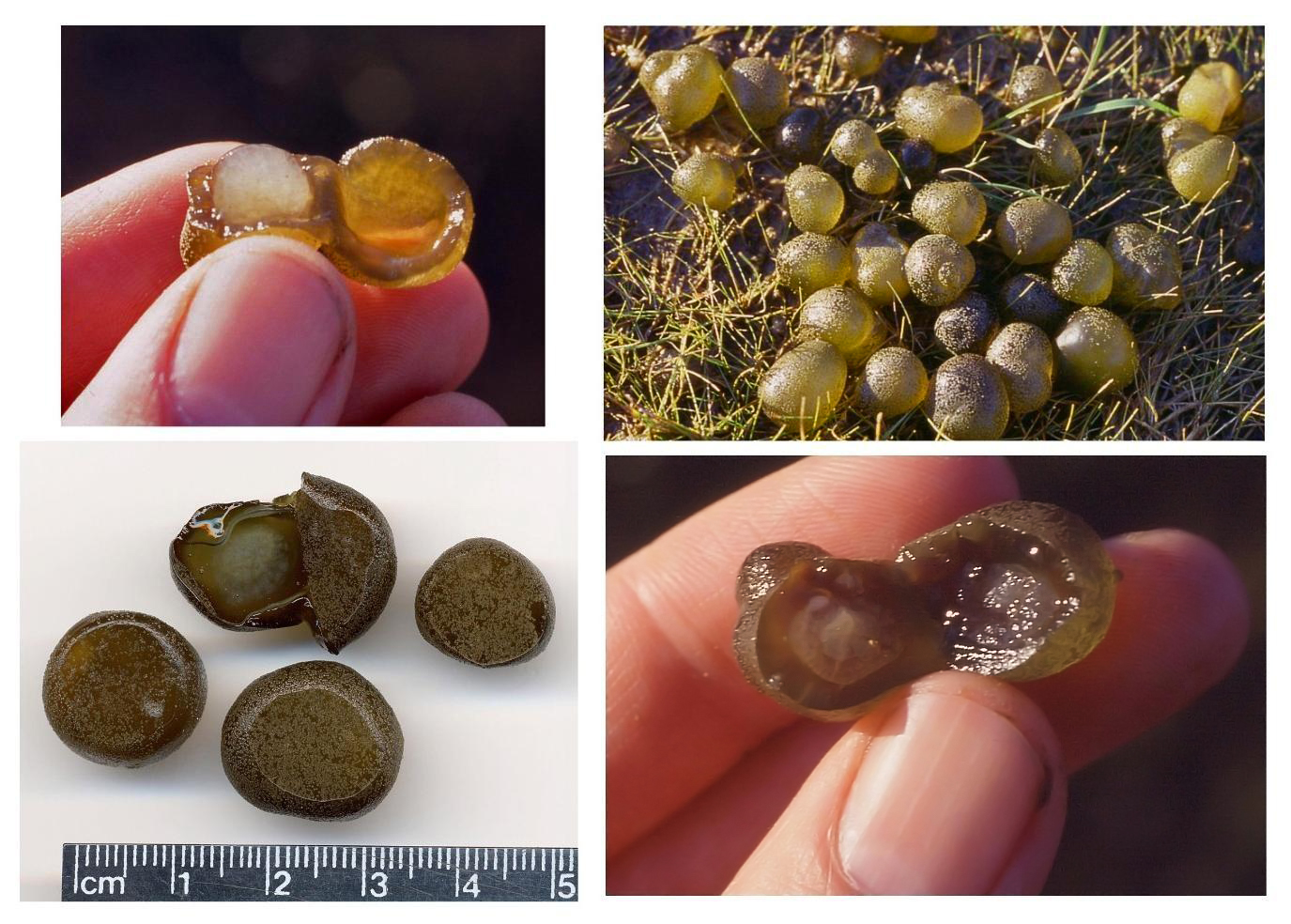What are these little green balls in the water?
You may have noticed small green balls floating in ponds and marshy areas. These are colonies of a microbe called Nostoc, a species of cyanobacteria, sometimes also known as blue-green algae. There are many different species of cyanobacteria in the world. Some of them grow as spongy structures on land whereas others cause “algal blooms” during the summer in our local lakes. Nostoc is a colonial form of a group of cyanobacteria. Essentially, the bacteria come together to form the spherical structures.

Cyanobacteria are quite interesting organisms. Similar to plants, they will use light to photosynthesize in order to create sugars (i.e., their food). They also have specialized cells called heterocysts that can fix gaseous nitrogen. Nitrogen is an element used by lifeforms to make organic compounds such as enzymes and muscles. Unfortunately, nitrogen found in the atmosphere cannot be “captured” by most lifeforms in order to make organic compounds. Only certain types of bacteria, such as cyanobacteria, can do so. The heterocysts will absorb the nitrogen in the air and transform it into a form that living organisms can use – this process is called nitrogen fixation. Then other organisms eat the bacteria and use the organic nitrogen in their bodies. The organic nitrogen is then transferred throughout the food chain. Therefore, cyanobacteria and other nitrogen-fixing bacteria play a vital link in providing organic nitrogen to all lifeforms on our planet.
So next time you see Nostoc floating in your local waterway, have no fear. Except for the occasional “bloom” which can be a nuisance, they do not release toxins in the water. Remember they play an important role for life on this planet.



